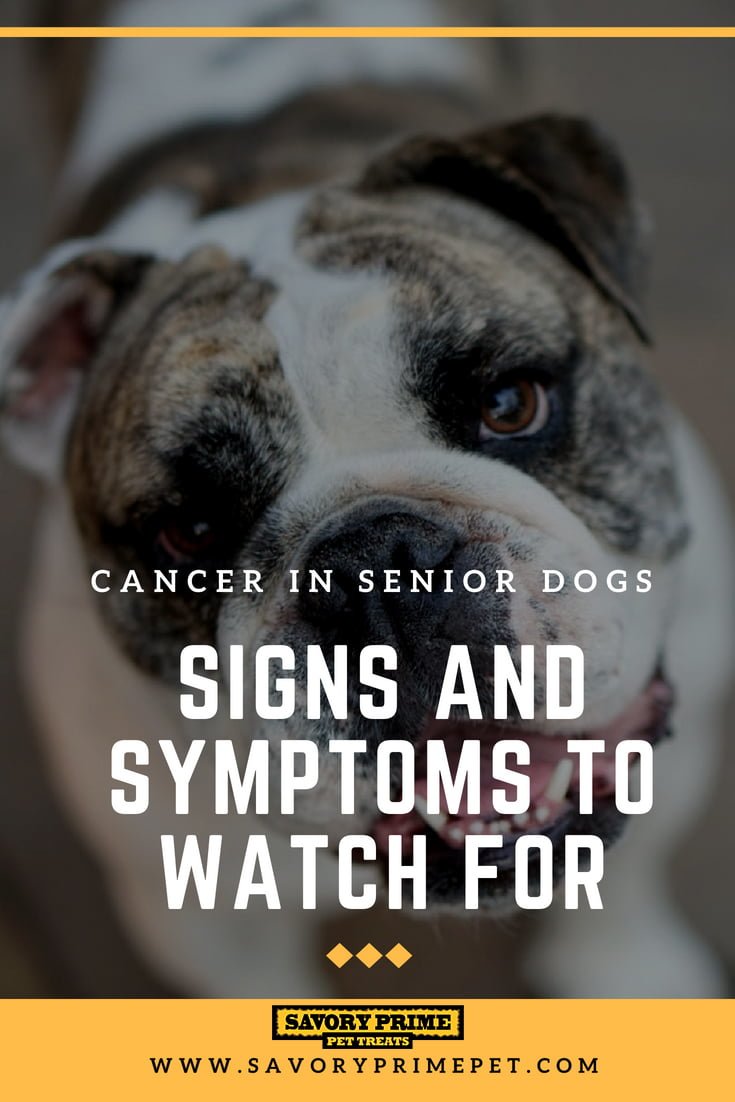As our dogs get older, they are at a greater risk for many diseases, including cancer. Almost one-third of all dogs more than seven years old will experience cancer at some point in their lives. In fact, according to the Flint Animal Cancer Center at Colorado State University, cancer is the leading cause of death in pet dogs in the United States, with as many as 50 percent of pets dying from the illness. Therefore, it’s important to keep a careful eye on your senior dog‘s health and behavior to remain alert to any signs of cancer as soon as possible, before the disease spreads.
Unfortunately, cancer is a complicated illness. There are many different types, such as lymphoma, melanoma, and prostate cancer, and the illness can occur all over the body. Cancer is defined as uncontrolled growth of abnormal cells, but the signs and symptoms vary greatly depending on the location and type. So, monitoring your older dog’s overall health is essential. The Flint Animal Cancer Center recommends watching for the following signs of illness:
- Unusual swellings, lumps, or bumps that persist or continue to get larger. These growths could appear anywhere on your dog’s body, so be sure to examine your entire pet regularly. This is best done during petting or cuddle sessions or can be a part of your dog’s weekly grooming routine.
- Sores that don’t heal. Any open wound that does not heal can be a sign of cancer or other problems, such as an infection.
- Weight loss. If your pet is on a diet, weight loss is to be expected, but otherwise, illness could be causing your dog’s weight to drop.
- Loss of appetite can be a sign of illness. Older dogs may not eat as much as they did when they were younger, after all they may not be as active, but it is not healthy for a dog to lose interest in food.
- Discharge from any opening in the body, such as the nostrils, mouth, or anus. This includes bleeding, vomiting, and diarrhea, as well.
- Bad odor is a common sign of cancer. Tumors in the mouth, nose, or anus can lead to offensive smells.
- Problems with eating or swallowing are a common result of cancers in the mouth and neck.
- Unwillingness to exercise and play, or a decrease in stamina. Although the cause for this can be as simple as old age, it can also be one of the first indicators that your pet is sick.
- Continuing lameness, like limping or stiffness, can be caused by nerve, muscle, or bone cancer. Although in older dogs it can also be a symptom of arthritis.
- Problems breathing or going to the bathroom. If your dog is wheezing, having trouble urinating, or straining to defecate, it requires an immediate trip to the veterinarian.
Although the above list indicates causes for concern, these signs do not necessarily mean that your dog has cancer. There may be other illnesses to blame. The only way to obtain an accurate diagnosis and, therefore, appropriate treatment, is to visit your veterinarian. It’s important to take your senior dog to the vet for regular wellness checkups every six months, but if you notice any of the above symptoms in between scheduled visits, make an appointment with your vet as soon as you can. Early detection is the key to treatment success, as well as to recovery and quality of life.
Recent Pet Posts
Blog Categories
Product categories
- Accessories (9)
- Chicken & Veggie Wraps (8)
- Grillers Jerky Tenders (4)
- Jerky Treats (10)
- Made in the USA (9)
- Non-Rawhide Treats (28)
- Beggar Bone (11)
- Bully Sticks (4)
- Butcher Bone (4)
- Cod Skin Fish Treats (3)
- Pork Skin Twists (2)
- Pressed Rawhide Bones & Rolls (16)
- Bones & Rolls (6)
- Pressed Rawhide Bulk (6)
- Twist Sticks (4)
- Savory Munchies (13)
- Supreme Bones & Rolls (48)
- American Rawhide Bulk (16)
- Rawhide Bones (14)
- Rawhide Chips (6)
- Rawhide Rolls & Sticks (12)
- Uncategorized (8)


